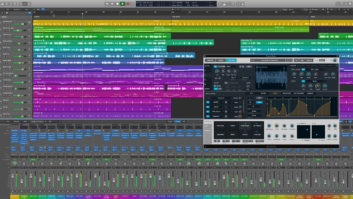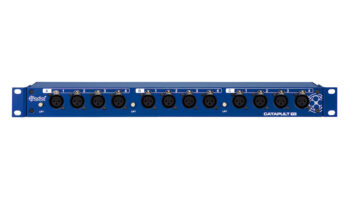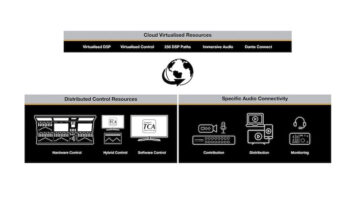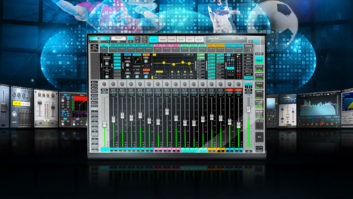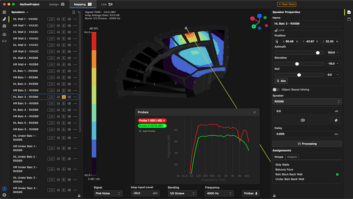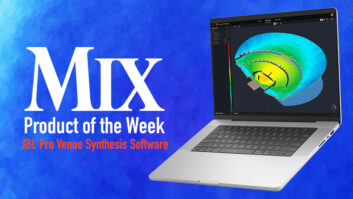In my AES 2016 report, I described the company RackFX as “like an Airbnb for signal processing—there’s a community of people with vintage gear. You send a file to them, they process it (although if you don’t know what settings to specify, you’ll need to go back and forth), and you pay based on how the host sets their price—flat fee, file size, etc. Wacky and weird? Or the Studio Instrument Rentals of the future? Time will tell.”
Well, three years later, the fate of RackFX is uncertain. Regardless, time has told us one thing: The world continues its relentless move online. But it’s no longer just a software world—even hardware is moving online, as exemplified by Access Analog and Mix Analog, two services that provide access to professional analog audio hardware via an internet connection. While their approaches differ somewhat, their common goal is to put hardware, not just software, in the cloud.
Related: The 141st AES Anderton Awards, by Craig Anderton, Nov. 1, 2016
Both services require a relatively speedy online connection—they recommend a minimum of 10 Mbps, although if you want to use Mix Analog’s 192 kHz/24-bit option, you’ll need something better than that. Mix Analog uses your browser to send signals back and forth; however, plug-ins for Mac OS and Windows (now in beta testing) will allow communication directly from your DAW. Access Analog is already plug-in based, and supports Mac and Windows (AAX, VST 2, VST 3 and AU).
To use these services, you upload your file to their virtual studio, and then tweak settings to taste, with nearly real-time playback. You can then transfer a final version. Access Analog places emphasis on real-time streaming, so you can choose the buffering time, as well as lossless or compressed audio (although your final file can be done offline, with uncompressed audio).
Because both services depend on hardware, you have to book time to reserve specific pieces of gear. Once in the virtual studio, you send your audio into the hardware. How they control the hardware varies. Mix Analog developed stepped, drop-in, relay-based replacements for existing controls. This has the advantage of providing highly repeatable settings, and eliminating servos reduces the time required to move to a new setting. It’s quite clever.
And speaking of clever, Access Analog uses sophisticated robotics, as well as routing options to accommodate different mono/stereo scenarios. You can even place mono units side-by-side in their rack plug-in to process each channel of a stereo signal individually. The plug-in analogy even carries through to being able to save presets and do parameter automation.
The business models of the services are somewhat different. Mix Analog is a subscription service that works like booking a studio—you pay for time. If you don’t use up your hours in a billing period, they roll over to the next month. You can use the service free for 30 minutes a day, although the selection of free gear is smaller than that of the three paid tiers, which range from $15 to $60 per month. Higher prices buy more storage space for storing files and bounces, higher sample rates, and additional “studio” time. Your money buys credits at Mix Analog; after the initial purchase, your credit card is out of the picture.
Access Analog currently has introductory pricing. Final pricing ranges from $9.99 for 30 minutes to $37.99 for three hours; the service is not subscription-based, and the plug-in is free.
Of course, the 800-pound gorilla here is latency—the same problem that scuttled early online collaboration services, none of which survived. What’s worse, latency is able to creep in at several different points in the audio production process; there’s plug-in latency, internet latency, robotics latency, and the A/D conversion latency getting your audio into the hardware. Optimally, if you process something like a stereo master through an online tape recorder, latency is less problematic. But in a multitrack scenario, the online audio can easily get out of sync with your tracks. With a fast connection and a DAW with flexible maximum delay compensation, you’re probably okay. DAWs like Pro Tools and Logic may require moving existing tracks to allow everything to sync up. (Or premix your tracks, mute the other tracks, and move only the premix as you process in the cloud.)
Is this the new Studio Instrument Rentals? Time will tell. Factors working against it are latency, the niche nature of the market, the lack of convenience compared to using plug-in emulations, and, frankly, the fact that plug-in emulations are getting pretty darn good. Still, there are some situations where digital has not yet managed to outdo analog. Whether people are willing to pay for that difference is the question.
Access Analog • www.accessanalog.com
Mix Analog • www.mixanalog.com
